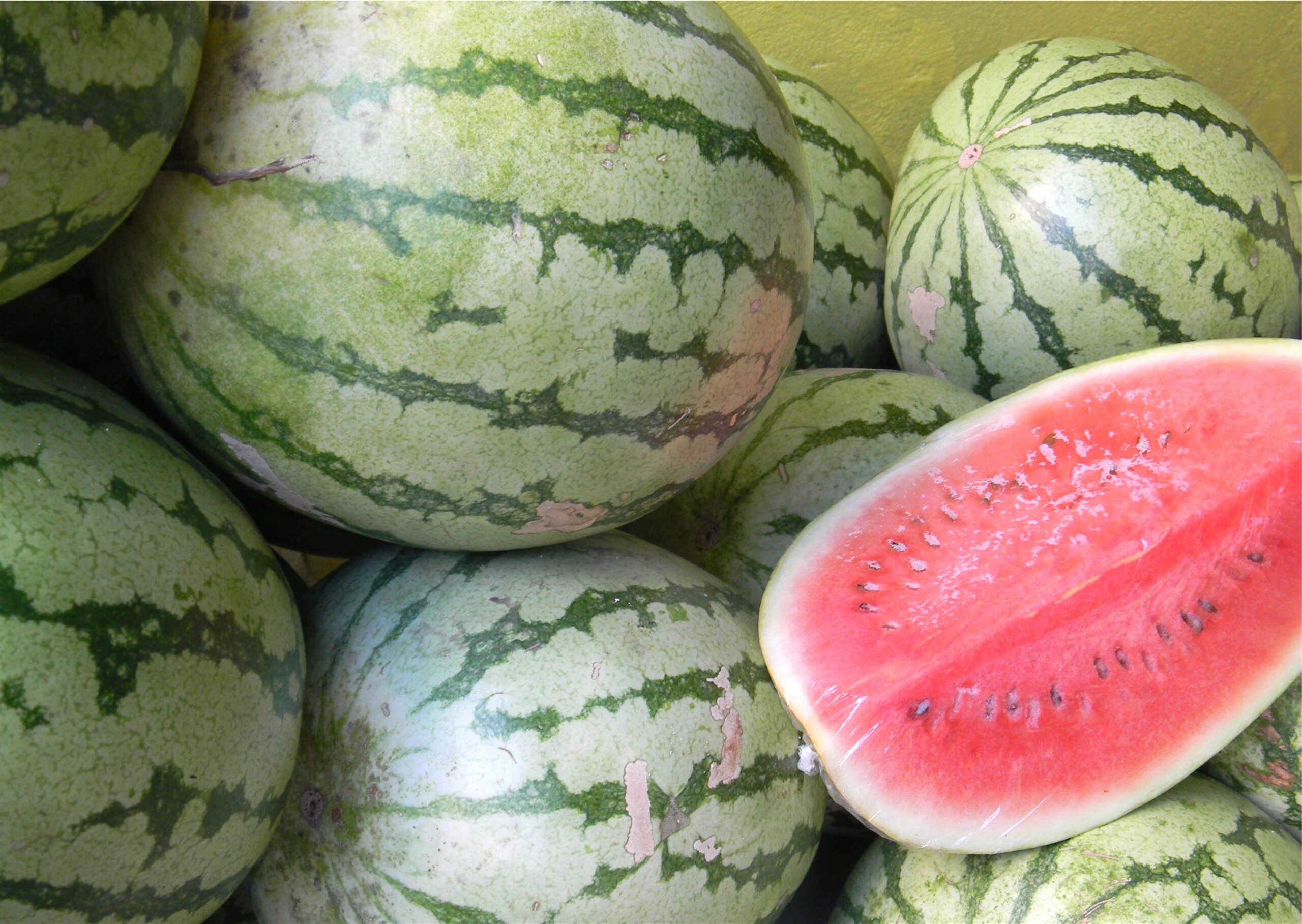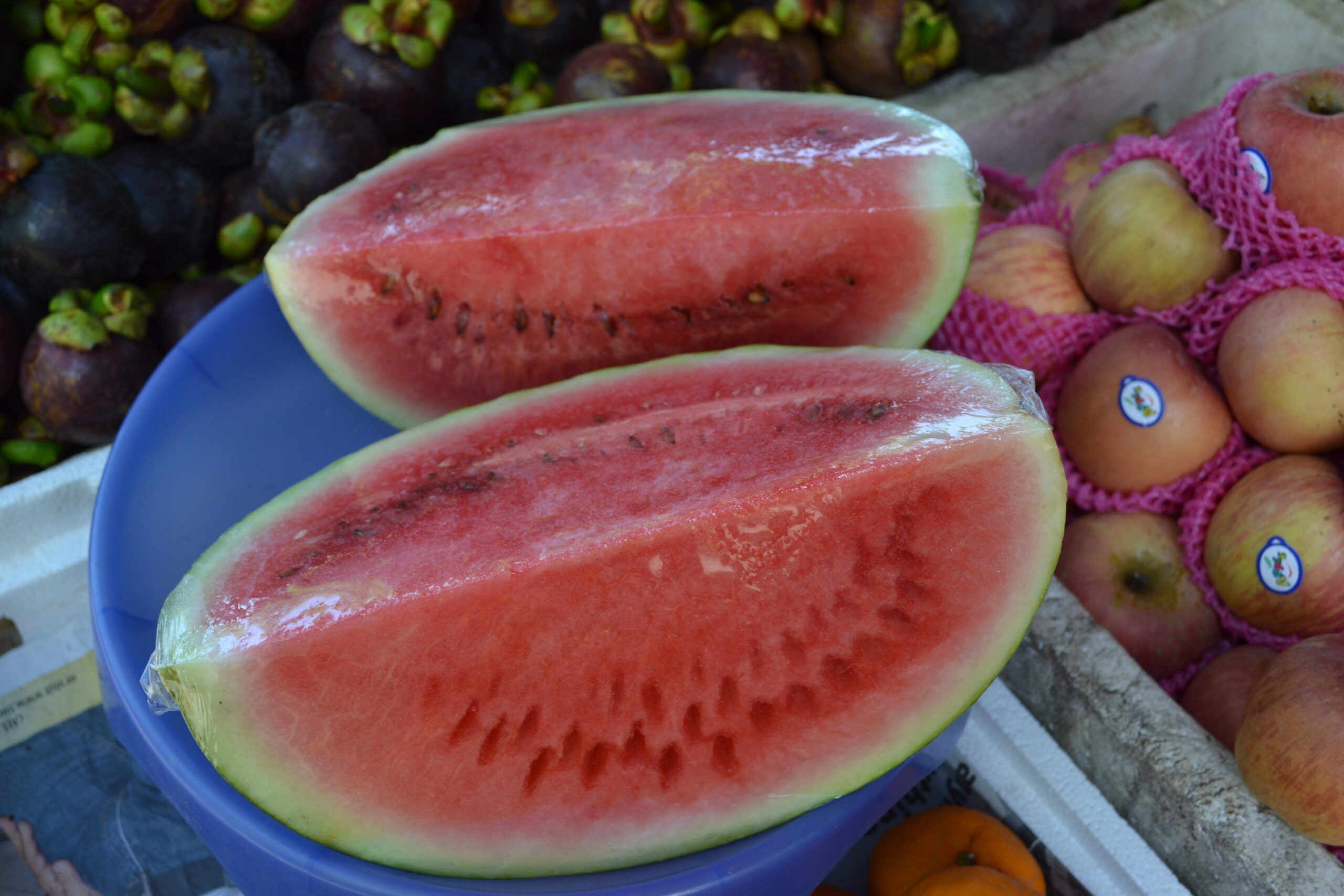Text and Photos by Henrylito D. Tacio
Think back to when you were a child and when during the summer months, the pinnacle of cookouts and family gatherings was always the cold juicy watermelon that was for dessert. When you were young, eating watermelon was about taste.
Now that you’re older, it’s more than just the taste that should inspire you to eat lots of watermelons each year when the season arises. It’s because watermelons have tremendous health benefits that anyone who lives a healthy lifestyle should be determined to take advantage of every year.
Let’s take a closer look at some of the health benefits this fruit has to offer.
No matter how it is sliced, watermelon is packed with some of the most important antioxidants found in nature. It is an excellent source of vitamin C and a very good source of vitamin A, particularly through its concentration of beta-carotene.
Food experts recommend watermelon as a very good source of vitamin B6 and a good source of vitamin B1, and magnesium. Because of its higher water content and calorie value, it is ranked more valuable than other fruits.
Dr. Willie T. Ong, an internist-cardiologist who is a staunch advocate of a healthy lifestyle, says every two cups of watermelon (280 grams) contain 80 calories, zero fat, 27 grams of carbohydrates, 10 milligrams of sodium, 80 micrograms of vitamin A, lots of vitamin B2, 80 milligrams of vitamin C, 18 milligrams of lycopene, and ample amounts of potassium, iron, and calcium.
Dr. Ong considers watermelon as a natural energy drink. So when the heat of summer tires us with thirst, eating watermelon is a safe alternative to taking energy drinks. Since it contains high amounts of water, it can hydrate us, whereas other drinks are caffeine-filled energy drinks that can easily dehydrate us.
Compared to an apple, watermelon has only half as much sugar, and yet, “it tastes sweeter because of its high water content,” Dr. Ong points out.
Don’t throw away that watermelon pulp. It can be used to treat heat rash and burns. Hot rashes are pimple-like eruptions at the back and chest area due to excessive sweating and heat.
As a home remedy, Dr. Ong suggests this: “Place a watermelon rind in a refrigerator and let it cool. After a few hours, apply the inner part of the rind on the affected areas of the body. The cooling effect of the watermelon rind relieves the heat rash.”
The water in the fruit is said to be made of 92 percent pure alkaline water. “Compared to acidic juices of oranges and pineapple (which may irritate people with ulcer and gastritis), watermelon is safe for your stomach,” Dr. Ong says.
So, this summer, keep the doctor away by eating watermelon. “During the hot and humid weather, nothing beats a cold, sweet, and juicy slice of watermelon. It’s healthy and refreshing,” Dr. Ong says.
But there’s more to watermelon than just a good fruit to be eaten during summer.
For one, watermelon is good for the kidneys, bladder, and those having problems with gout. “Just like coconut water, watermelon is effective for cleansing the kidneys and bladder,” informs Dr. Ong.


People with urinary tract infections or kidney stones may help treat their conditions by drinking lots of watermelon juice (and distilled water, too). As for those with gouts, Dr. Ong assures, “Watermelon does not contain uric acid, and can help people with gout by reducing the amount of uric acid in the body.”
Watermelon is also good for the heart and blood vessels. In a report which appeared in “Journal of Nutrition” (March 2007 issue), the researchers from the United States Department of Agriculture said that eating watermelons increases our body’s arginine levels, an important amino acid.
Arginine is a component needed to produce nitric oxide, a substance that relaxes the blood vessels, improves blood flow, and may save a person from a heart attack and stroke. In addition, watermelon may help people with high blood pressure because of arginine’s vessel-dilating effect and its potassium and magnesium content.
Believe it or not, watermelon is also good for sex. Citrulline is the special nutrient in watermelon that gives rise to arginine. Studies show that the flesh of a watermelon contains about 250 milligrams of citrulline per cup.
“When citrulline is converted to arginine, this can lead to the relaxation of blood vessels, which is the same basic effect of drugs for erectile dysfunction like Viagra and Andros,” Dr. Ong explains. “Watermelon may not be as potent as these drugs, but it can still help the heart, brain and male sexual organ, too. And watermelon comes without the drug’s side effects.”
Most importantly, watermelon may help prevent cancer and slow down aging as it has the highest concentrations of lycopene of any fresh fruit or vegetable. “The deep-red watermelon variety contains the pigment lycopene, which may help prevent prostate cancer,” says Dr. Ong. “This antioxidant helps counter the bad effects of free radicals circulating in the body. Once we reduce these free radicals, we can theoretically slow down aging.”
Having some trouble reading? Eat watermelon. “Watermelon’s vitamin A and vitamin C content are beneficial for the eyes. Yellow watermelon is a good source of lutein, which is important for preventing age-related macular degeneration. “So remember, red watermelon to prevent cancer and yellow watermelon for the eyes,” reminds Dr. Ong.
Watermelons are generally believed to have originated in Africa several thousand years ago and to have traveled over time from Africa to Asia to Europe to North America. Their arrival in Asia and the Middle East is believed to date back to approximately 900–1,000 A.D., and their arrival in Europe is estimated to have occurred in 1300–1400 A.D.
Evidence of its cultivation in the Nile Valley was found from the second millennium B.C. Watermelon seeds have been found at Twelfth Dynasty sites and in the tomb of Pharaoh Tutankhamen. Watermelon is also mentioned in the Bible as a food eaten by the ancient Israelites while they were in bondage in Egypt.
By the 10th century, watermelons were being cultivated in China, which is today the world’s single largest watermelon producer. By the 13th century, Moorish invaders had introduced the fruit to Europe. According to John Mariani’s Dictionary of American Food and Drink, the word “watermelon” made its first appearance in an English dictionary in 1615.

